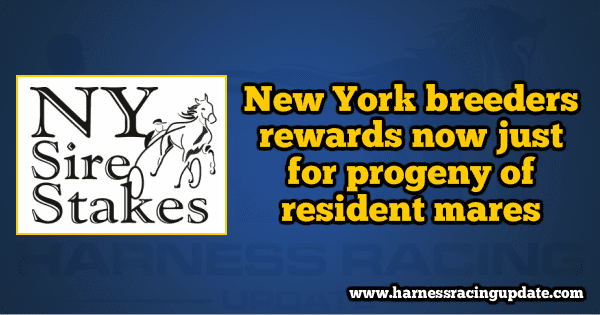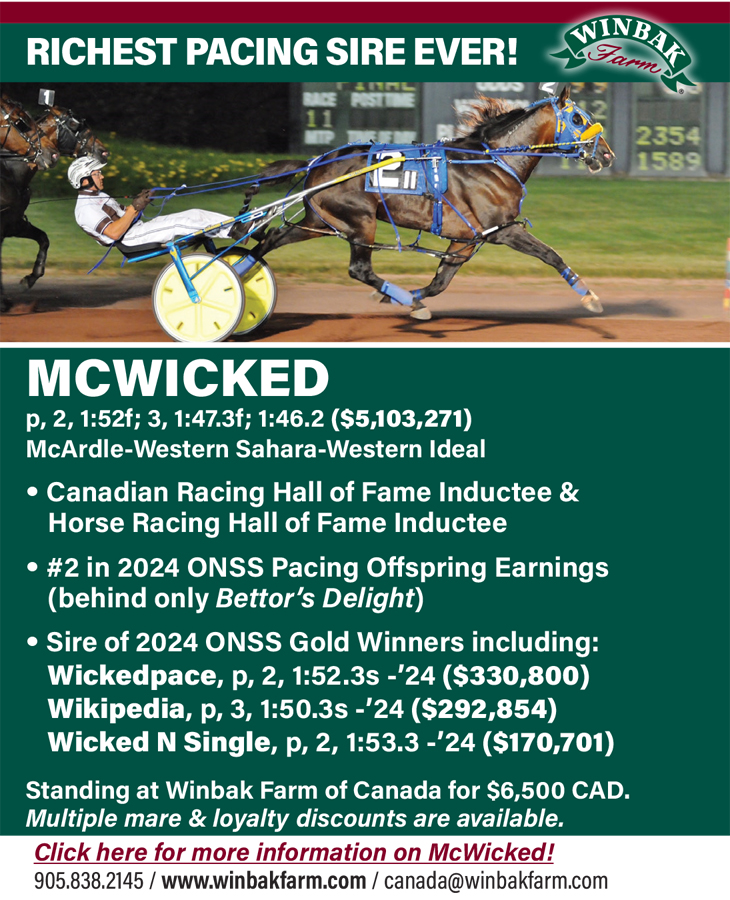Changes to the New York breeders’ rewards highlight lucrative NYSS program
by Dave Briggs
The woman in charge of the New York Sires Stakes (NYSS) program said recent changes to its breeders’ awards program will deliver maximum return on the state’s investment in harness racing.
M. Kelly Young, the executive director of The Agriculture and New York State Horse Breeding Development Fund, said the $1 million reward program has been changed from one split between residency awards and performance awards in recent years to one that, as of 2018, will deliver rewards only to those breeders of New York-sired horses out of New York-resident mares (mares that spent a minimum of 180 days in the state during the breeding year) that earn money in NYSS competition.
“That’s the foundation for why the state invests in a program of this type,” Young said. “Horse racing is not just the economy that’s generated at the track, it’s the economy that’s generated throughout agriculture all across the state. That money is going to turnover in our economy many times, from buying hay to paying for farrier services, to veterinary services, to moving the horses around the state for racing season. So, when you have the agricultural base, it really multiplies the impact that you have and the benefit to the state.”
Considering the NYSS is already one of the most lucrative in North America with some $14 million in annual purses, Young said developing a system that invests most of that money in New York gives the industry a powerful political argument for retaining the crucial program in future years.
“It really gets to the heart of our agricultural base. That’s why the New York Sires Stakes was
developed in the 1960s to support the farms we have in the state,” Young said. “Our mare residency program just underscores that and the fact that we’ve devoted such a large pool of money to it.
“It’s going to reward those people that have committed to the state – the farm owners, the broodmare owners, who have selected New York for their home — and we really hope they are able to take advantage of that and their horses are able to perform well this year. We’d like them to take home some big checks at the end of the season.”
The NYSS season gets underway on May 8 and concludes on Sept. 22 at Yonkers with the $1.8 million NYSS Night of Champions — $225,000 for each of the eight divisions. Unlike last year, the 2018 Night of Champions will be on a different Yonkers card than its $1 million Yonkers International Trot, which is set for Oct. 13. That means the Night of Champions will be just one day after Ohio’s famed Little Brown Jug.
“Last year, the horsemen were concerned that the finals were so far out. They wanted them closer to the bulk of the legs again, so that’s why we moved it back,” Young said.
She said she expects 24-hour detention barns will return in 2018.
“Last year was the first year that we had a full 24-hour detention barn for our finals and it was seen as a big success by our participants. They were really pleased that we are focusing on maintaining a high bar for integrity for our races, so we are going to plan to duplicate that again this year,” Young said.
New for 2018 is the chance for the state’s six other harness tracks to bid to play host to the Night of Champions in future years.
“We are also embarking on a new process for locating our Night of Champions, so every third year we are going to open it up to allow all of the tracks in the state who are interested to submit a proposal for hosting the Night of Champions,” Young said. “We are going to accept those for the first time this year. Those will be going out to the tracks shortly and they can send in a proposal for what they would like to do for the Night of Champions. We have a set of criteria that they would have to meet, but then it’s kind of up to them, if they would like to show off and host the Night of Champions.”
Other changes for 2018 include increasing the purses for the Excelsior Series Finals from $45,000 to $55,000.
“It’s our mid-level tier of the Sires Stakes program, and that tier has been so competitive that we felt that we had to increase their purses in the Final, because they are really good races and the horses have worked really hard all year to get to that place,” Young said, adding the county fair program is also an important part of the NYSS program.
“We have three tiers and it’s intentional that we have three tiers for all ability levels in the state. This year, we’re going to have 20 fairs hosting harness racing from July 2 to August 21 and at least seven of those will have racing-under-saddle events. That’s become a really popular attraction at our county fairs,” she said, adding the NYSS organizers take great pride in the fact New York was the first jurisdiction in North America to develop a sires stakes program. It has proven to be a game-changing idea for the sport.
“New York was the first to develop the Sires Stakes concept and implement it, but, obviously, it was quickly duplicated in every major racing jurisdiction in North America,” Young said.
“(The NYSS framers) understood that the way you support breeders in the state is by having these really enhanced races for young horses. Great purses then pushed the yearling sales, because it’s a great opportunity for people to buy those yearlings to earn money. The yearling sales are what push forward and sustain our breeding farms, so it’s just this great cycle where the racing and the breeding programs are linked.”














